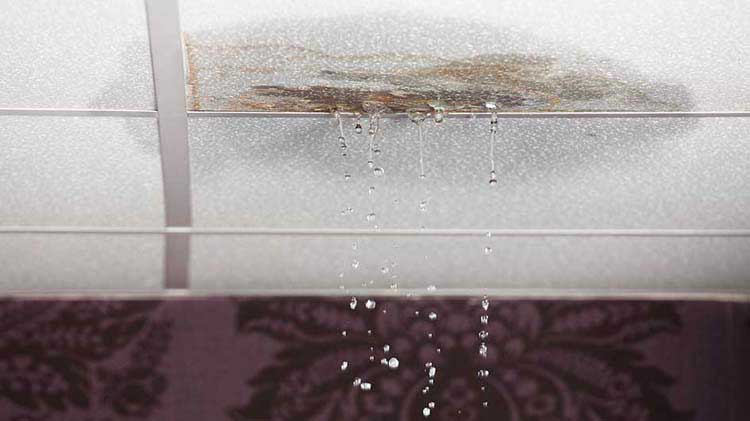Learn About 6 Common Causes Behind Water Leakage Within Your Home
Learn About 6 Common Causes Behind Water Leakage Within Your Home
Blog Article
Do you find yourself interested in ideas around Common Water Leaks In House?

Leaks not just trigger waste of water but can also trigger unneeded damage to your house and advertise unwanted natural development. Regrettably, water leakages might go undetected considering that a lot of the pipework in our house is hidden. By looking as well as understanding for day-to-day situations that cause leaks, you can secure your house from future leaks and unnecessary damage. Today, we will take a look at 6 leak causes that may be causing your pipelines to trickle.
Trespassing roots
Many water leaks begin outside the house instead of inside it. If you observe a sudden decline in water pressure, say in your faucet, require time to go out and also examine your backyard. You might notice wet patches or sinkholes in your yard, which may indicate that tree roots are invading water lines causing water to permeate out. You can have your plumber look for intrusion, especially if you have trees or shrubs near your residential or commercial property.
Rusty water systems
This could be the cause of discoloration or warping on your water pipes. If our plumbing system is old, take into consideration changing the pipes since they are at a greater risk of corrosion than the newer designs.
Faulty Pipeline Joints
The point at which your pipes connect is often the weakest link in the waterline. Pipe joints can wear away with time, leading to water leakages. The bulk of pipeline joints are not quickly visible. If you have loud pipelines that make ticking or banging sounds, especially when the hot water is turned on, your pipeline joints are most likely under a lot of stress. It is recommended to have your plumber evaluate your system yearly.
Instantaneous temperature level adjustments.
Severe temperature level modifications in our pipes can create them to broaden as well as contract unexpectedly. This development as well as contraction might cause splits in the pipes, specifically if the temperature are below freezing. If you maintained an eye on how your plumbing works, it would be best. The presence of the formerly stated scenarios regularly indicates a high danger.
Poor Water Connectors
Sometimes, a leakage can be caused by loose tubes and pipes that supply your home appliances. Typically, shifting is what creates the loose water Connections. You might locate in the case of a washing equipment, a tube may spring a leak as a result of drinking throughout the spin cycle. In case of a water connections leak, you might observe water running directly from the supply line or pools around your devices.
Clogged Drains
Blocked drains pipes may be bothersome as well as inconveniencing, however they can often wind up causing an overflow causing break pipes. Maintain eliminating any materials that might go down your drains pipes that could obstruct them to avoid such hassles.
All the above are sources of leaks but not all water leaks result from plumbing leaks; some leakages may come from roof leaks. All leaks need to be fixed immediately to avoid water damages.
Leaks not just cause waste of water however can additionally create unnecessary damage to your home and also advertise undesirable organic development. By recognizing and looking for daily circumstances that cause leakages, you can shield your residence from future leaks and also unnecessary damages. Today, we will certainly look at six leakage creates that may be creating your pipelines to drip.
At times, a leakage can be triggered by loosened hose pipes and also pipes that supply your devices. In situation of a water links leak, you may notice water running directly from the supply line or pools around your appliances.
How To Check For Water Leak In Your Home
How To Check for Leaks
The average household's leaks can account for nearly 10,000 gallons of water wasted every year and ten percent of homes have leaks that waste 90 gallons or more per day. Common types of leaks found in the home are worn toilet flappers, dripping faucets, and other leaking valves. These types of leaks are often easy to fix, requiring only a few tools and hardware that can pay for themselves in water savings. Fixing easily corrected household water leaks can save homeowners about 10 percent on their water bills.
To check for leaks in your home, you first need to determine whether you're wasting water and then identify the source of the leak. Here are some tips for finding leaks:
Take a look at your water usage during a colder month, such as January or February. If a family of four exceeds 12,000 gallons per month, there are serious leaks.
Check your water meter before and after a two-hour period when no water is being used. If the meter changes at all, you probably have a leak.
Identify toilet leaks by placing a drop of food coloring in the toilet tank. If any color shows up in the bowl after 10 minutes, you have a leak. (Be sure to flush immediately after the experiment to avoid staining the tank.)
Examine faucet gaskets and pipe fittings for any water on the outside of the pipe to check for surface leaks.
Undetected water leaks can happen without the home or business owner even realizing. If you suspect a water leak, but not able to find the source. It is time to contact a professional water leak detection service, The Leak Doctor.
How To Find a Water Leak In Your Home
https://www.leakdoctor.com/blog/How-To-Check-For-Water-Leak-In-Your-Home_AE197.html

I discovered that article on How Fast Water Damage Can Ruin Your Home when doing a lookup on the search engines. If you liked our blog posting please remember to pass it around. Thanks for your time. Visit again soon.
Click For More Info Report this page